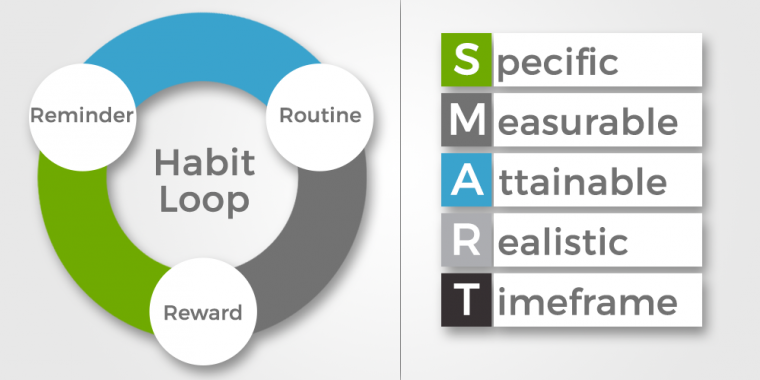How often do you say to yourself that you are finally going to change those old bad eating habits, but end up failing over and over again. Why can’t you do it? How do you change those annoying habits anyway? Why does it have to be so hard???
I can’t tell you how many times my clients have become frustrated, especially whenever they have tried to change an old eating habit by simply making healthier eating choices. Sounds pretty concrete and easy, doesn’t it? Just take the carrots versus that big bag of potato chips whenever you’re getting ready to sit in front of the television set! Doesn’t seem like rocket science to me?? Boy, I wish it could be that simple!
Changing an old habit cannot rely on “willpower” or “the power of intention.” Even if you decided to utilize the “power of intention” techniques to create a roadmap to achieve your life goals, you still will have to take some form of “action” to make your goals a reality.
So, what exactly is a habit? The definition of a habit that can be found in the Wikipedia as follows: “A habit is a routine of behavior that is repeated regularly and tends to occur subconsciously.”
There are two excellent habit systems that you can use, The Habit Loop and the SMART Formula, that will help you set up long-lasting habits and achieve success!
The Habit Loop
In Charles Duhigg’s best-selling book, “The Power of Habit” he outlines that there are three steps of the “Habit Loop” such as the cue, routine, and reward. The “Habit Loop” can also be known as the loop of habit formation. James Clear’s article “The 3 R’s of Habit Change: How To Start New Habits That Actually Stick” he decided to exchange the word cue for trigger or reminder.
The 3 R’s book, he stated that every habit follows the same 3-step pattern.
| Reminder | The trigger that initiates the behavior Example: I walk into the living room after the kids have been put to bed and hear the commercial for my favorite television show. |
| Routine | The behavior itself; the action you take Example: I go to the pantry closet that has all of my favorite TV snacks and then get comfy on the couch and adjust the volume. |
| Reward | The benefit you gain from doing the behavior Example: I open up my yummy snacks and the show begins!!! I’m finally relaxing! Utopia! |
The last of the 3R’s is the reward that we are going to receive and/or give to ourselves for changing our old habits.
Set Up Habit Reminders
In order to change an old habit with a new habit, you have to set up new cues or reminders.
Let’s use a common Weight Watcher technique of brushing your teeth. Using our 3 R’s example, once you put the kids to bed and then go brush your teeth, you are setting up a new cue that eating time is over. Think about it – who really wants to eat when their teeth are all shiny and nice and clean?
Here are a few more ideas. Writing down a list of cues or reminders that would work for you? Remember, every day many of us wake up, shower, get ready and drive to work and then come home, make dinner, do whatever we need to do for our partner, kids or pets and then sit down and try to relax before getting ready for bed. It’s probably a routine that you’re not even thinking about (unconscious). Therefore, in order to do something different, we have to make a “conscious” effort to make it happen.
For example, instead of going downstairs to watch TV, program your smartphone to remind you that it’s time to write in your personal journal about all the things that you’ve accomplished that day and all the things that you are grateful for? (i.e) finished that project at work, my health, my home, my family.
SMART Formula
Whenever I conduct my “Jump Start Your Weight Loss” workshops, I always discuss the importance of using the SMART formula.
What does SMART stand for?
S- Specific, M- Measurable, A- Attainable, R- Realistic and T-Time frame.
Do you want to create a better new habit? First, you must define the habit and more specifically how you are going to change it. It’s important to remember that changing habits and daily routines happen slowly and can’t be achieved overnight! The SMART formula is effective for habits and daily routines.
SMART formula example:
| S | I will write in my journal 2x’s this week. (Specific) |
| M | I will make a weekly calendar and put an X through the 2 days that I write in my journal. (Measurable) |
| A | Is it attainable? Yes. (Attainable) |
| R | Is it realistic? Yes. (Realistic) |
| T | I will write in my journal 2x’s during the next 7 days. (Timeframe) |
I think that each time you write in your journal, exercise or go for a walk and don’t sit on the couch eating all those processed snacks, I want you to say to yourself “Alright, Alright, Alright – I Can Do It”!! Then put on that rocking song that you love and do your “happy dance” all around the house!!! You’ve got this!!!
Battling old habits with better new habits can be quite challenging at times, but once you follow the 3R formula and set up the cues that will work for you or use the SMART formula – the healthier new routines will seem effortless and the rewards will be amazing.
Contact Us NowThis article is written by Jean Marie Rafferty and published on ObesityHelp. Read about the author and original article here.








